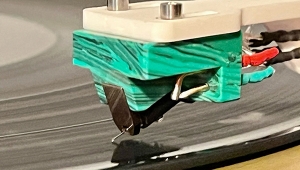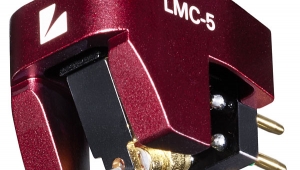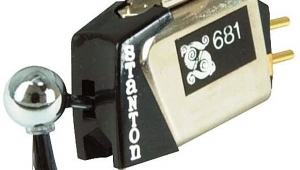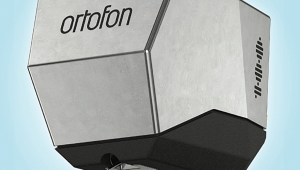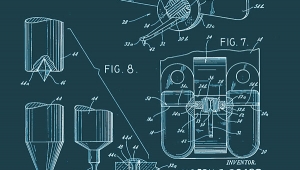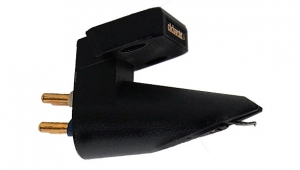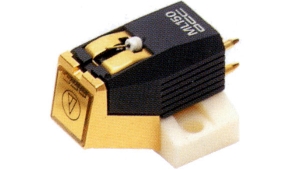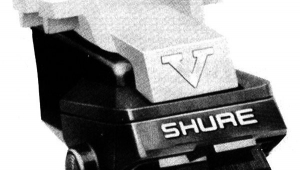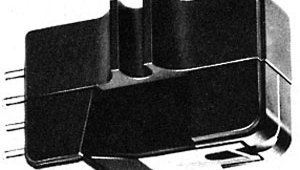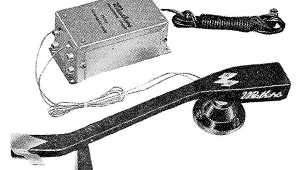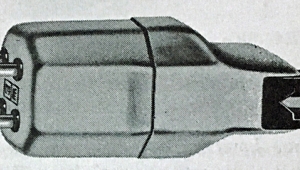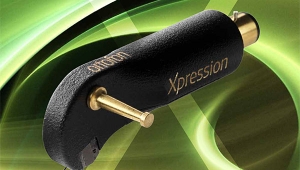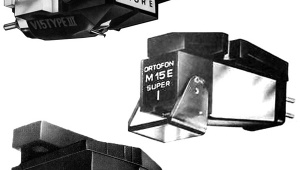| Columns Retired Columns & Blogs |
Rega Apheta MC phono cartridge Page 2
I noticed from the start that the Rega's spatial performance was stunning—especially for a product from a company known for being at least mildly dismissive of such concerns, but stunning in absolute terms as well. I heard imaging effects throughout XTC's Skylarking (Geffen GHS 24117) that had completely escaped me in the past—for example, how the rhythmic pattern played on the hi-hat in "Summer's Cauldron" is panned back and forth from left to right, in time with the beat!
Cisco Music's great new LP reissue of Jascha Heifetz and Gregor Piatigorsky's recording of Brahms' Double Concerto, with Alfred Wallenstein conducting the RCA Victor Symphony Orchestra (RCA Soria Series LDS-2513), sounded amazing under the Apheta. Make no mistake, the original was neither the most tonally neutral nor spatially realistic recording ever made; the brass and woodwinds have a bit of the pinched, pungent sound one associates with recordings a decade older, and the horseshoe-shaped "soundstage" has some of the winds sneaking up on the listener's left shoulder. But this one is to be prized for the fire of the performances—Piatigorsky's more than Heifetz's, this time out—and for the sheer immediacy of its sound. That's where the Rega Apheta locked in and took the listening experience to the next level. It was so intense that I felt compelled to switch back to a different cartridge to find out if I was just imagining things. I wasn't. I've heard Piatigorsky's "Batta" Stradivari cello up close, played by his grandson, Evan Drachman, and while I wouldn't be so silly as to say that I "know" the instrument's sound, I do know that this recording does justice to its extraordinary responsiveness—and that the Rega Apheta did justice to that aspect of the recording.
But the experience wasn't all spruce and varnish: There was an artifact in the Rega's sound—some graininess and a slight peak in the upper mids and lower highs—that intruded on all but the softest-sounding records. Early on, I attributed this to the fact that the Apheta hadn't yet been fully broken in—that's precisely what it sounded like. In fact, during the Apheta's first night here, one of the first LPs I tried was a new Speakers Corner reissue of the Clemencic Consort's astoundingly well-recorded Danses Anciennes de Hongrie et de Transylvanie (Harmonia Mundi HM 1003). I was impressed by the lifelike presence of the instrumental sounds—and, at the time, more or less untroubled by the upper-range edginess. I remember telling my wife, "This may in fact be the best phono cartridge I've ever heard—it just needs to run in a little more."
The Apheta's sound did mellow a bit over the following weeks, and the grain went away—but that upper-midrange peak remained. While the Apheta's remarkable directness, rhythmic aplomb, pitch certainty, and spatial realism didn't diminish, the cartridge's sound never lost that bit of an edge, the way most MC cartridges do in their first week or so.
The Apheta was also somewhat less generous in its bass response than others, such as the Linn Akiva and Brinkmann EMT Titanium. The difference between the Rega and the Linn was most striking on "Soon," from the Speakers Corner reissue of Ella Fitzgerald Sings...The Gershwin Song Books (Verve MG VS-6082-5). The Linn conveyed more low-frequency force, as heard in both the drum accents and the string bass. The Rega was slightly more sibilant on the voice—which was a shame, because the Apheta made Ella sound much more there than the Linn. Listening to the Beatles' "Fixing a Hole," from Sgt. Pepper's Lonely Hearts Club Band (Parlophone PMC 7027), the Rega gave Ringo's hi-hat enough of an edge that it became the dominant instrument throughout the song; switching to the Linn Akiva, my attention was instantly drawn back to Paul's clever electric bass line, which was where my attention remained.
The distinctions were carried over to other recordings. On Georg Solti and the Vienna Philharmonic's famous recording of Wagner's Götterdämmerung (London OSA 1604), Birgit Nilsson's Brünnhilde sounded heavier, more impactful, and even a bit more dramatic with the Linn Akiva. Yet when she and Wolfgang Windgassen's Siegfried make their first entrance in the opera, in the Prologue ("Brünnhilde zu gewinnen, Brünnhilde zu erwecken!"), the Rega Apheta did a better job of conveying their physical distance from each other and from the microphones. As far as tracking was concerned, the two cartridges were on a par with one another: both pretty good, both breaking up just a bit on the most heavily modulated parts. The Linn did a distinctly better job of shrugging off the scratches and pops in my copy, however.
Listening to André Previn and the London Symphony Orchestra's nicely made recording of Tchaikovsky's Manfred Symphony (EMI ASD 3018), I heard the Apheta's strengths and weaknesses combined. The woodwinds had wonderful presence—I felt as if I could touch them if I wanted to, if you'll excuse the horrific clich—and the Rega seemed supreme in its ability to signal changes in rhythmic nuance, as with the triplets played by the cellos later in the first movement: No cartridge in my experience has been better at finding the dots over the notes. But the violins sounded lighter and rougher than they should have, and the cymbals and triangles were raspy throughout.
The Apheta allowed upbeat rock to sound appropriately upbeat, as with the title song of the Clash's brilliant London Calling (Epic E2 36328). I hadn't listened to that one in a while, and with the Apheta in place I was genuinely surprised to hear how much quicker the song was than I remembered. But there was also more edge than I usually hear in Joe Strummer's voice: Plosives, of which the late Mr. Strummer had no shortage, were overly stressed, as was the relentless sound of drummer Nicky Headon's hi-hat work. The latter was also true of the Stones' "Street Fighting Man," from Beggars Banquet (London PS 539). The sound of Charlie Watts' drum kit—actually a portable practice kit used for deliberate effect on that famous number—is intended to have a certain relentlessness; but with the Rega cartridge, as compared with the Linn Akiva, that effect was just too much.
Conclusions
Rumors that Rega Research planned to make a moving-coil phono cartridge began circulating at least a year or so ago, and I admit that I was excited at the prospect. I also admit that, like other audio enthusiasts, I began to form an opinion of the thing before I ever heard it, based on what I knew of the company and their other products. I assumed I would love it.
Even when I first installed the Apheta in my system, I was ready to write a check: It sounded musically right and spatially enthralling, if a bit edgy; I assumed that its response would smooth out in the weeks to come. It didn't—and of all the people who might be disappointed by such a thing, no one could be more disappointed than I.
It's a curious thing, and I can't resist comparing the Rega Apheta with another iconoclastic design, the Lowther 7" full-range driver (in just about all of its incarnations). Both have remarkably good speed, snap, and clarity. Both are among the very best in their respective fields at making music sound real and present and there. And both sound just a little bit edgy. Enthusiasts with more technical grounding than I have can make what they wish of the comparison, and their insights may be valuable. But I'm no engineer, so it's not for me to say.
I'm cheered by the Rega Apheta's appearance on the scene. I think that the very existence of such a thing in the 21st century says something nice about our hobby. And I hope that, in time, the Apheta's considerable promise can be realized. In its present form, however, this one just isn't for me.
- Log in or register to post comments
